Last spring when I started walking more around my corner of northwest Seattle, I first noticed the sign in front of a lush wooded lot:
"Notice of Proposed Land Use Action."
I've seen a lot of these signs around Seattle the last few years, as the city rezones single-family residential areas to allow multi-story, multi-family buildings. With our shortage of housing and the City's push to increase density, many homes with spacious, landscaped yards are being demolished and scraped bare to make room for big boxes.
This particular sign showed the whole south end of the block being torn down (three homes) and replaced with a multi-story building extending to the proposed sidewalk. There wasn't a tree in sight on the proposed development sketch.
My stomach churned in dismay at the impending loss of the gorgeously landscaped lot on one corner, where a charming small house with a Japanese flair sat surrounded by a variety of beautiful, vigorous trees and happy, healthy shrubs like rhododendron and Oregon grape.
With the pandemic lockdown, the plans hit pause, and I often walked past that home with an increasing appreciation for the time and care the owners took cultivating such a sweet woodland in a built-out neighborhood.
And so a year passed, with many trips walking past this treasure, and nothing happened.
Within the last few months, however, the sign finally came down and the house started to look uninhabited. A few plants and trees started to disappear, and the yard began to look less than its meticulously cared for best.
A few weeks ago, after staying away for a few days, when I returned and saw the devastation, I was shocked. The huge laurel hedge and house at the west side of the block were demolished into a scorched earth war-like zone of dirt, jagged pieces of wood, and smashed bricks. The little Japanese house was also gone, with just a pile of rubble remaining.
But the woodland out front remained intact, for the moment. With the house gone, my walking partner and I scrambled over the bank and into an enchanted glen of native plants, shrubs, and lovely mixed trees.
This little glen felt surprisingly private and rich, just across the street from a playfield. With sun filtering through the newly leafed out Japanese maples and evergreens, I breathed in the rich scent of mature forest.
My friend Lynette brought her clippers, and got some greenery for the beautiful wreaths she makes. I came back a day later (they weren't working the weekend there) with a few pots and trowel and dug up some wood sorrel and violets to take home, to spare them the crush of the tractors.
Before I stepped inside the glen, I paused and watched a hummingbird hovering and flitting around in there. As I stood in the glen, I found myself touching the trees, calling each one sister. It pained me to see such spring brilliance, with fresh shoots coming out of the evergreens, Japanese maple leaves unfurling, and lovely blossoms, knowing very soon their lives would be destroyed.
It brought back sorrowful feelings of a few months earlier, when I made the appointment for a vet to come to my home to put my Tashi cat to rest, although in that instance we were ending her suffering from end-stage kidney failure. She didn't know the fate that was soon to befall her. In this instance, these trees were healthy and vibrant with the promise of spring, likely not cognizant of their impending demise.
I was dreading walking by and seeing all this gone, but each day for a week the glen remained intact. Maybe the developers saw the value in retaining these mature trees and a well-tended landscape; perhaps they would keep them as an asset to work into their development plans.
The next Monday I got a text from Lynette, telling me they had taken our garden. While I thought I couldn't bear to see it, I made myself walk over there to record what I saw, which was pretty darn sad. It made me feel numb.
I snapped a few shots and walked away. I haven't looked at it since. Fred, who tends the community garden across the street, said they found empty bird nests amidst the trashed landscape. No one in the neighborhood is happy about it.
I do realize the irony of this European American, whose nearby home sits on what was lush forest land not much more than a century ago, bemoaning the loss of a mid-20th century garden. My ancestors came to this area over 150 years ago and were likely involved in the massive destruction/filling of the tidal estuary between West Seattle and present-day downtown.
But still, trees are important for the health of our climate, our birds, our wildlife, and, yes, people. The City of Seattle has some tree protection ordinances, but nothing that would have saved this little lot.I think it's a shame.
Shame on the City for not providing more oversight and regulations to save a wonderful woodland, however small, that provided valuable habitat for birds and such. Shame on the developers for not adjusting their plans, for not sacrificing a little $$ for the sake of saving a restorative woodland that would have been wonderful for the new residents and important for the birds who nested there. Shame on us all for allowing the continued loss of green space and trees in our city and region.
Happy trails and thanks for visiting Pacific Northwest Seasons! In between blog posts, visit Pacific NW Seasons on FaceBook, Twitter, and Instagram for more Northwest photos and outdoors news.










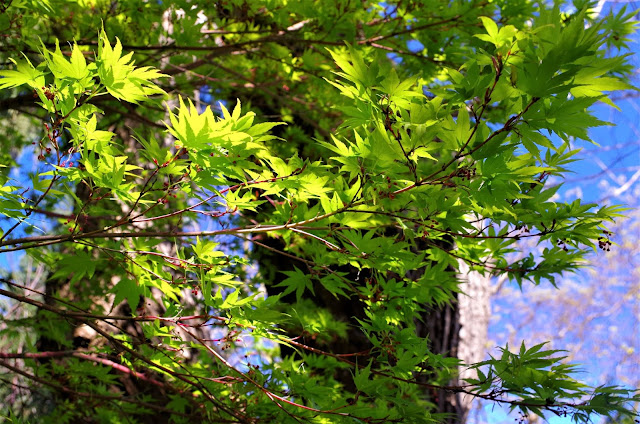













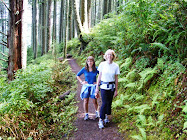

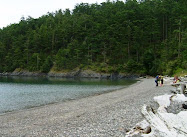
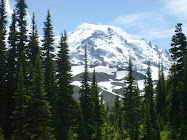


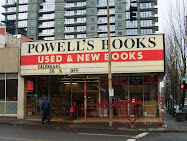
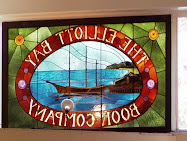

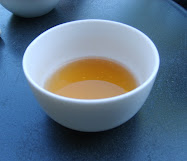
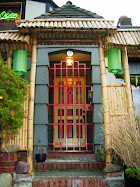




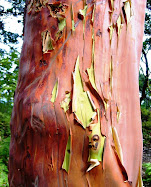

12 comments:
There is a deep sadness over this loss. Being a lover of gardens and a forager I had never seen such a mature and well tended garden in all my walks. It had vergreen species that were unique and mature. The love that created it was obvious. I drove my husband and daughter by just to see it’s beauty and Lu said she thought maybe would try to buy it to save it. The wreaths of Soulumination benefitted from this beautiful garden. Once it was absolutely destroyed I started gathering edging stones from the devas and am creating a new border in its memory. This is a loss to us all. Thank you Jill for introducing me. Lynette
I hope it is ok - I forwarded the link to this post to the Puget Soundkeeper Alliance asking if these types of projects need to apply all possible Low Impact Development practices. The Alliance has been pretty aggressive at fighting all sorts of water pollution, including stormwater issues. Your pictures sure make it look like a poster-child for NOT low impact development.
Pete Haase - Bow, WA
Peter, sure, I think it's great that you forwarded this. Thank you. I was thinking of forwarding to City Council members. Yea, they're just razing the whole south end of the block and look to be covering with just impervious surface. Maybe a few token sidewalk trees, can't tell. It's very sad I think.
What a beautiful garden. This makes me so sad; my sympathies for your, and all our loss. I wonder if other owners of similar city lots could get an easement to protect their land. Some might say it might reduce value, others might say it would increase. Kind of like living right next to a light rail station.
This is so sad. I wonder if conservation-minded sellers can get an easement that would protect trees. Some might say this would reduce value, but perhaps this would increase it. Similar to living next to a light rail station, or a bike trail.
So sad! I have such feelings for trees... will never forget being on my way to work one morning and seeing a backhoe smash down a street tree in Sodo to make room for a highway ramp. Just a little sidewalk tree, but I almost cried. It speaks to an overall disregard for non-human lives and, by extension, human lives as well. I have to say that here on the east coast, 20 minutes from NYC, I live in a neighborhood full of native oak and maple trees as well as ornamentals. It's a shame that Seattle, known worldwide as a green city, is actually very bad at conserving its greenery.
I'm building houses on two lots here in Port Townsend. The town has some regulations about how much of each lot cannot be covered with impervious products, but not about how much can be cleared. My house plans fit among mature trees that I won't cut down--and does that annoy the builder and the lot-preparation crew? YES. They point out that it's practical to scrape everything off the lot, even the topsoil, to make room for construction equipment, etc.
They did that in the lots next to mine. A huge madrona, three towering Doug firs gone. The houses sit in a wasteland.
Sylvia, big kudos to you for standing firm about retaining those trees! Yes, it's more convenient for builders to scrape it all bare for temporary staging, but the loss!
Jenifer, well said! I'm going to forward this to City Council members, who likely will not read, but it will make me feel like I did a teeny something.
Suezy, your story about those foxes, coyotes, etc. is heartbreaking, but it has happened all over our planet for centuries. So sad.
Todd, interesting about the easement. I'm not sure what might have been done for this particular lot to try and preserve. It makes me want to know more about the owner and their story.
Jill, This blog entry is so moving...thank you for having the thought to document your secret garden. I also am now curious about the family that tended this beautiful garden. This was a story worth telling, thanks Jill. Might be a good Op-ed piece for the Seattle Times I think...then the city council might even pay attention. - Mab
Not sure if you are still monitoring, but if so: Here is what the Puget Soundkeeper Alliance told me - (short version) "Developers are required to follow city code and the requirements of the Municipal General Stormwater Permit for redevelopment projects. The Permit requires that LID BMPs be used for new development, new construction, and redevelopment projects. It is my understanding that all projects must have a Construction Stormwater Pollution Prevention Plan (SWPPP) that outlines the BMPs that will be implemented onsite."
SOooo ... interested/concerned folks can look up and read the Seattle "Municipal General Stormwater Permit" - which is a hard slog but essential to understand how/why things are done regarding stormwater runoff. A second thing it to watch the work as it progress at that site - you should see several "Best Management Practices" (BMPs) in place to prevent dirty water escaping from the property while construction is happening. (You can see a lot of these where ever construction projects are happening - covering piles of exposed dirt with tarps for example. Sometimes the big blue "Baker tanks" for collecting and treating dirty water from the site.) The third thing is to watch what kinds of stormwater "treatment" facilities are put in for handling on-going stormwater once the construction is all done. There might be drains leading to an underground vault with big filters that clean much from the water before it flows into the bigger city storm drain system. There might be little "rain gardens" or "vegetated swales" that will allow stormwater to collect and infiltrate soils where the vegetation removes some contaminates and the soils also retain some. If done well, these are very attractive and useful as they mature. The building themselves may capture runoff from the roofs and use it for watering/recycling. Hopefully it will be interesting, instructive, and maybe even a positive result!!! (Still - they shouldn't a cut it all down!!!)
Hi RG, thanks for the time you put into researching this! I have noticed a big tarp over a pile of debris (dirt?) on the site walking past. It is in an area with no proper sidewalks or storm drains in north Seattle, when builders weren't required to pay mind to such things I don't think. I've been meaning to go to the developer's website and see what they have to say about their work. I think the sad thing is cutting down ALL the trees. There is an older (1970s?) multistory apartment in the same general area that has a lovely green space to the north of the building with mature trees and shrubs. IOW they reserved some of the whole lot for green space instead of building right to the edge as we see now with newer development.
Jill, how ugly especially since the spring was the rebound of nature and our social lives. One of the things that I live about our condo is the lovely vacant lot across the street. At some point the trigger will be pulled but at the moment it’s kept nicely mowed and it’s the neighborhood off-leash dog park and a couple of corners have flower and veg gardens. A small treasure. But I live in the city not a sweet residential neighborhood. And, of course I have a 40 acre farm to satisfy my tree lust. This week it’s an abundance of sweet and pie cherries. Blueberries are next and I am hoping that they don’t fully ripen until the blueberry- loving sacramento kid arrives. Very expensive in sacramento and parking Maddy under a bush to eat as many as she wants is a wonderful treat. That, and of course pies. Love to hear from you. Mary lou
Post a Comment